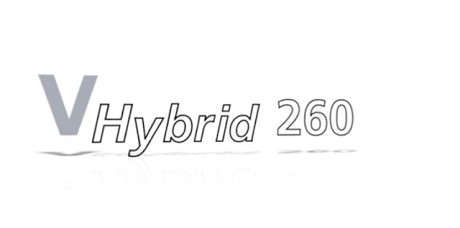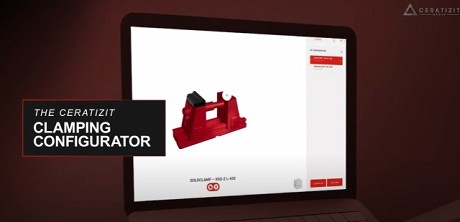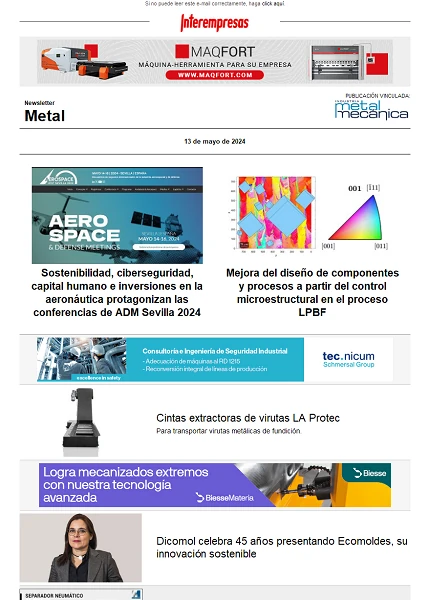Potential for improving efficiency through turning in hard and grinding
on February 1, 2011
The benefits of the combination of turning and grinding include the complete machining, improving the quality and great flexibility. These technologies in combination can also reduce the cycle time. If the machining is carried out in a single machine, processing times, transport and intermediate storage can be reduced drastically. In addition there are visible benefits in time and the effort of making point-to-point.

Strengths and weaknesses
Many production processes make use currently for external cylindrical grinding conventional (picture 1). Conventional grinding methods are highly optimized, which becomes an obstacle when it comes to the innovation in this field. A key feature of the grinding with CBN on the conventional is the drastic reduction in the main timeline (Photo 2). In addition to the reduction of this time there is also a significant reduction of the side times achieved thanks to the great life of CBN tools. A disadvantage of the CBN grinding is that the high cost of the tools make this an almost exclusive procedure for large series and mass production.

External high-efficiency profiles or hulled cylindrical grinding is a variant of the grinding CBN which controlled thin wheels generate the profile of the piece along a contour controlled by CNC. This process, characterized by its high flexibility, is ideal for external cylindrical machining of entire families of parts. The disadvantage lies in the use of technologies of high speed and grinding oil investment.
A process which competes with the grinding is turning hard (Photo 3). The turning hard is also characterized by its high flexibility. This process is often positively evaluated by the user as he is done dry. The disadvantage of turning dry remains of process instability: unpredictable decays in the cut surface can lead to failures in the process. On the other hand, quality of attainable piece with standard machines is limited to the rank of IT6.
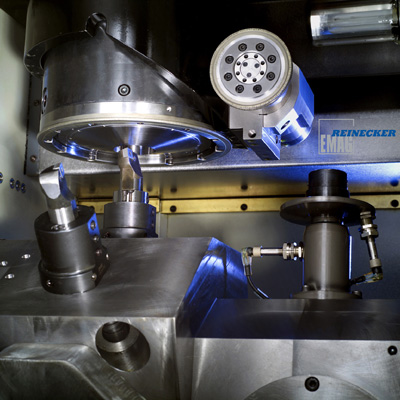
Optimal solutions with combined machines
This makes it clear that any process complies with all the precision hard machining needs. Combined machines offer the possibility of an approach to the problem from the point of view of the piece and the requirement of machining, to thus reach an optimal solution for a case in particular (Photo 4). The optimization can be done in three important areas: productivity, part quality and production costs. Combined machines, optimally equipped, offer the flexibility can be used as a grinding machine or as a conventional lathe.

The head of the work piece is mainly designed for the requirements of turning. The speed of rotation of this is much higher than that in the majority of the conventional grinders. When the machine will be used for machining in soft, there are higher requirements on maximum head to torque when he rectified. A very important requirement is the free chip fall. In the grinding demand more requirements. External and internal machining, as well as the plane machining of heels, demand different requirements for speed, torque and rigidity. To cover all the range of needs is necessary a modular head.
A general requirement for a combined machine is a precise control of temperature. For example, roughing operations can cause temporary and locally a thermal load. The resulting heat must be maintained under certain limits so that the following finishing operations are not affected. On the other hand, to be a viable option, the use of combined economic investment should be maintained within a justifiable margin when compared with investment in grinders and lathes separately.
An excellent example of a machine combined for the machining of parts at the plate is the VSC platform of Emag (Photo 5). The concept of 'pick-up' responds perfectly to the needs of chip-free fall. The load of the machine through the axes of the machine is fast and simple. With the turret of tools, the axis and the axis (b) and firmly anchored in the Workbench, the machine grinding head covers a very wide range of applications.
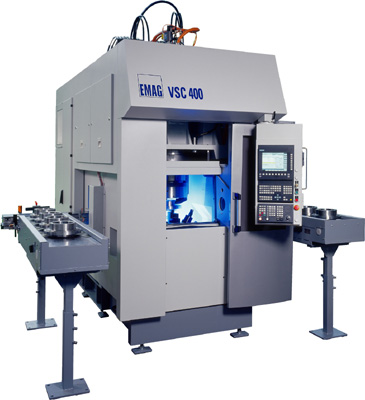
An example of the combination of processes are the Emag machines of the series VTC DS (Photo 6).Is already turning, drilling, milling, grinding or turning/grinding machining. The VTC integrates all variations of machining of axes. The VTC 315 DS model was designed for high-quality parts that occur in medium and large series, as for example, trees of transmission, rotor shafts, pump shafts, motor axis or axes of transmission. For each of these components, there is a combination of appropriate technologies. Resistant parts can be machined using raw, while thin and fragile pieces make use of grinding. The machine can be used as a grinding machine, such as a lathe or as a combined machine (Photo 7).
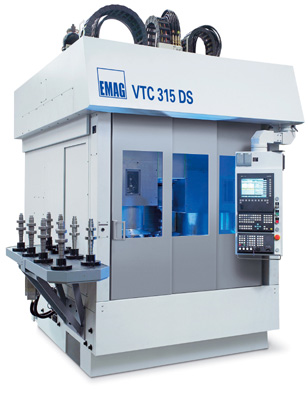
A typical example of the combination machining process are gears. The turning flat end of the steps carried out torneando hard. Due to the standards of quality of holes and cones, they Nombre and end up with grinding. To this end, the machine is equipped with two heads of grinding. A head portamuelas is for the grinding of holes; the other for external machining. Because only a few hundredths of a millimeter should be rectified, grinding tools are designed for the finish. This process has moved currently largely use pure grinders, and therefore this technology must be understood as of Vanguard.
Another example of the proper use of the technology of combination is the production of nuts with grooves for recirculation of balls, which are used in the spindles of balls. In the nuts should be machining the internal thread, the front face, the outside diameter and the step. For the presented process, the obverse, the outside diameter and the flat surface are turned hard and the track to the balls of the thread was rectified. To this you can use a machine of the VSC series additionally equipped with a B axis and an axis and. The progress of the thread angle is controlled with the axes B, very precise. The axis and is used for positioning in the machining of ball track. The machine is equipped with two heads of grinding, which in turn can be equipped with different intermediate tools for both operations and finish. A device of revived toothache diamanta profile with a diamond roller. The machine is suitable both for the use of CBN wheels as conventional. A transducer of 2, 5-D is used for the precise determination of the angle of the moored piece and can be used to control 'post-process' turned on hard surfaces.
The advantage of this approach in contrast to the conventional sequence of processes is that all predicate surfaces quality are machined at a single mooring. With this you can avoid errors due to the mooring, especially the alignment of the flat surface, the external diameter and the central axis of the track of the balls.
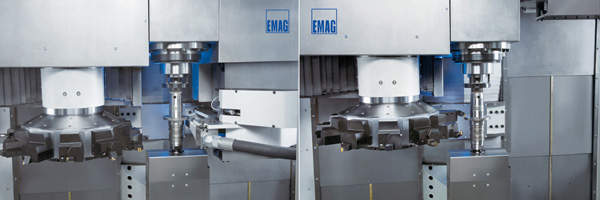
Technology and the machines in practice
In machining of parts to the dish, the combination of cutting-edge technology is turning and grinding. The potential for rationalization of the processes is still very important, because we are still far from implementing the processes of combination in all cases in which would be justified. In the future, as well as the processes of turning and grinding, it will also strengthen the integration of processes such as the burnished, milling and reaming, both in hard.
For the machining of axes are now machines on the market that enable the integration of processes. The use of these systems is not yet widespread in parts at the plate, as there are highly productive systems based on conventional processes of grinding, CBN and modern technologies of turning. However, there are signs that in the future the advantages of combined also processes will be used for machining of axes.
In general, we can say that the combined processes already are not dealt with exotic methods, but proven machines and technologies. Through consistent application of processes of combination and the future integration of other manufacturing processes considerable improvements can reach potential for rationalization.


